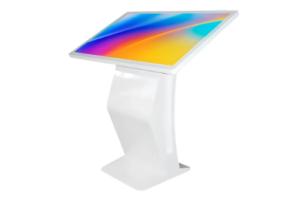Many graduates, and navigating the complex world of loan forgiveness can be overwhelming. The Defense Application provides an avenue for borrowers to seek relief from federal student loan debt if their educational institutions have defrauded them. In this article, we will explore the Borrower Defense Application process, step-by-step, and help you understand how to pursue loan forgiveness successfully.
1. Understanding the Borrower Defense Program
What is the Borrower Defense Program?
The Borrower Defense Program is a federal initiative they believe their educational institution engaged in fraudulent activities or misrepresented information. The program was designed to protect students from unscrupulous schools and relieve those who have suffered from deceptive practices.
Who is Eligible for Borrower Defense?
To be eligible for Borrower Defense, you must have taken out federal student loans to attend an institution that violated state laws, defrauded students, or breached contractual promises. Both current students and those who have already graduated can apply for loan forgiveness through this program.
How Does the Borrower Defense Program Work?
When you submit a Borrower Defense Application, the Department of Education will review your claim and investigate the allegations against your educational institution. Partially or fully discharged, depending on the severity of the misconduct.
2. Preparing for the Application
Gathering Necessary Documents
Required documents include enrollment agreements, transcripts, and any correspondence with the institution.
Reviewing Loan Information
Review your loan details, including the loan types, amounts, and disbursement dates, as this information will be necessary when filling out the application.
Understanding the Time Limit
There is a three-year statute of limitations for submitting the Borrower Defense Application from the date you became aware of the school’s misconduct or within three years of your last enrollment.
3. Filling out the Application
Online Application vs. Paper Application
You can submit your Borrower Defense Application online through the official student aid website or mail a paper application to the Department of Education.
Providing Detailed Information
Be thorough and specific when describing the fraudulent actions or misrepresentations made by the educational institution.
Documenting Evidence of Fraud
To strengthen your case, gather supporting evidence, such as emails, advertisements, or testimonies from other affected students.
4. Submitting the Application
Where to Submit the Application
Submit your application to the Department of Education via the designated method (online or mail) and retain copies of all submitted documents.
Application Review Process
The Department of Education will review your claim, contact you for additional information if needed, and conduct an investigation.
Waiting for a Decision
The review process may take several months. Stay patient, and regularly check your application status online.
5. Loan Discharge and Loan Forgiveness
Partial vs. Full Loan Discharge
If your Defense Application is approved, your loans may be fully discharged, resulting in the complete forgiveness of your debt, or partially discharged, reducing the loan balance.
Potential Tax Implications
Be aware that the IRS treats forgiven student loan debt as taxable income, which means you may owe taxes on the amount discharged.
Impact on Credit Score
A successful Borrower Defense claim may remove negative remarks from your credit report related to the discharged loans.
6. Appealing a Rejected Application
Reasons for Rejection
Applications may be rejected due to insufficient evidence or missed deadlines.
Seeking Legal Assistance
If you encounter challenges during the process, consider seeking legal advice from experts familiar with student loan forgiveness. Read more…
Conclusion
The Borrower Defense Application offers hope to students misled by educational institutions. By following the outlined steps, you can increase your chances of successfully seeking loan forgiveness and obtaining relief from the burden of student loan debt.
FAQs
- What types of educational institutions are eligible for the Borrower Defense Program?
- All educational institutions, including for-profit and non-profit, public and private, are eligible if they engage in fraudulent activities.
- Is there a deadline for submitting the Borrower Defense Application?
- Yes, you must apply within three years of the date you became aware of the school’s misconduct or within three years of your last enrollment.
- Can I apply for Borrower Defense if I have private student loans?
- No, the Borrower Defense Program applies only to federal student loans.
- Will a successful Defense Application remove negative remarks from my credit report?
- Yes, a successful application may remove negative credit remarks related to the discharged loans.
- How long does the Borrower Defense review process take?
- The review process may take several months, so you must be patient and regularly check your application status online.










